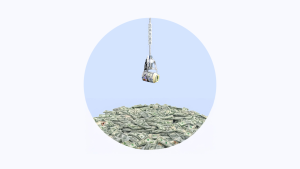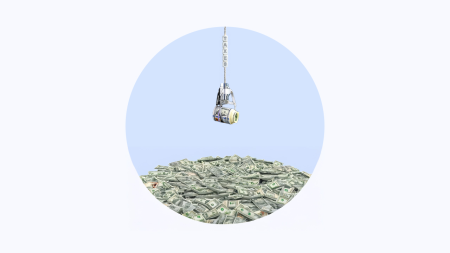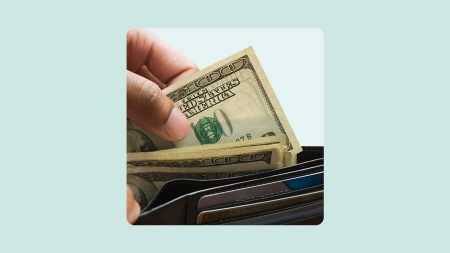The headlines about the housing market spotlight home prices, which are falling but still high, and mortgage rates, which have skyrocketed. Both are important factors in the affordability equation. But there’s another consideration that affects homebuyers just as directly: home insurance prices. This crucial cost has been quietly soaring, particularly in areas prone to natural disasters. Here’s how it all breaks down for homebuyers.
Key takeaways
- Home prices are high: The median nationwide price is more than $375,000, per the National Association of Realtors.
- Mortgage rates are also high, hovering around 6.5 percent as of May, which helps keep homeownership out of reach for many would-be buyers.
- Rising homeowners insurance rates are exacerbating this affordability problem, especially in natural disaster-prone states.
High housing prices
The nationwide median sale price for existing homes was $375,700 in March, according to the National Association of Realtors. That’s down 0.9 percent from March 2022. While home prices now have declined year-over-year for two consecutive months, the drop doesn’t undo a decade of rising home values: Before February’s drop, the U.S. housing market had been on a notable run of 131 consecutive months of year-over-year median sale price increases.
Home prices are largely a function of supply and demand. The housing supply has been constrained by lower-than-normal construction activity since the Great Recession, among other things. Demand, meanwhile, has been stoked by demographic trends — including the massive generation of millennials that has entered their prime homebuying years. The resulting shortfall has created a housing shortage that keeps prices high.
High mortgage rates
The average interest rate on 30-year mortgages rose to 6.52 percent as of May 3, up from 6.48 percent the previous week, according to Bankrate’s national survey of large lenders. Two years earlier, the average mortgage rate was just 3.21 percent.
The Great Recession ushered in an era of low mortgage rates. Then came the pandemic, which spurred the Federal Reserve to slash interest rates to zero. Mortgage rates followed, plunging to historic lows. But, while its moves are influential, the Fed doesn’t directly set fixed mortgage rates. The most relevant benchmark is actually the 10-year Treasury yield. The end of the pandemic and the recovery of the U.S. economy sent Treasury yields up sharply in 2022, and mortgage rates followed.
Many housing economists think mortgage rates will retreat below 6 percent by the end of 2023 — but no one foresees a return of rates in the 3 percent range.
High home insurance costs
Homeowners insurance rates are regulated by the states. Every state has its own insurance commissioner, who approves insurance price levels based on recent loss trends. If the insurance industry has a bad year in a given state, carriers can ask state regulators to approve higher rates — that’s why rates often go up when natural disasters occur.
However, your homeowners insurance bill can go up from one year to the next even when rates stay the same. For example, many policies have an “inflation guard” built in that raises a home’s coverage amount with each renewal. The increase is tied to potential rebuilding costs, which rise with inflation.
High-risk areas: Hurricanes, wildfires and more
While factors such as increasing building-material costs can cause your insurance premium to increase, the most dramatic driver comes from natural disasters. Extreme weather events, such as tornadoes, hurricanes and wildfires, have grown more costly in recent years. According to the Insurance Information Institute, four of the six costliest hurricanes on record have occurred since 2017.
Florida offers a case study in the trend of bad years leading to higher insurance prices. When Hurricane Andrew hit in 1992, it caused $16 billion in insured losses ($34 billion in today’s dollars). More costly storms followed, including Wilma in 2005, Irma in 2017 and Michael in 2018.
The mounting losses scared away some big-name insurers — for example, Allstate left Florida’s homeowners insurance market altogether long ago. That reduced competition and forced homeowners to rely on a new breed of smaller carriers, along with Citizens Property Insurance, a state-run pool.
The average homeowners insurance premium jumped 20 percent from 2022 to 2023, according to proprietary data provided by Quadrant Information Services. And the Insurance Information Institute predicts Florida homeowners policies, already well above the national average, could soar even higher this year. Meanwhile, many Florida homeowners must buy separate policies for windstorm coverage. According to Citizens Property Insurance, the average wind-only premium is $3,632 statewide. That translates to an additional $300 a month in ownership costs.
Hurricanes aren’t the only type of threat that’s growing costlier. Wildfires also have become more destructive, particularly in California. Eight of the 10 costliest wildfires ever have occurred since 2017, according to the Insurance Information Institute. Quadrant Information Services data shows that California’s homeowners insurance prices jumped 13 percent from 2022 to 2023.
What it all means for homebuyers
If you buy a home in a disaster-prone area, homeowners insurance can increase the size of your monthly payments — and therefore reduce your purchasing power and how much house you can afford.
Say you buy a $350,000 house with a 20 percent down payment and a mortgage rate of 6.5 percent. Bankrate’s mortgage calculator shows that your monthly principal and interest payment would be $1,769. But that figure does not include homeowners insurance premiums.
Depending on where you live, your insurance costs can vary widely. In Florida, one of the nation’s costliest insurance markets (as seen above), covering $250,000 in dwelling value (not land value) adds another $165 a month, which tacks around $2,000 per year onto your housing bill. By contrast, insuring the same valued property in Delaware, one of the nation’s least costly insurance markets, means a monthly premium of just $57. And flood insurance is a whole separate cost — it averages about $700 per year.
Since the pandemic, Americans have moved in droves from the Northeast and Midwest to hurricane- and flood-prone Sun Belt states. Areas in the West, vulnerable to wildfires and drought, also are seeing population surges. Buyer beware: Don’t be blinded by the sunshine and warm weather. Keep in mind that your insurance premiums in these states could come in much higher than you expect, so it’s important to do your research and budget for it ahead of time.
Insurance carriers often give discounts for adding storm shutters and fireproofing features, and you can boost your deductible to lower your cost. But in the areas most vulnerable to weather risk, homeowners insurance costs are poised to keep rising — which keeps homeownership that much further out of reach.
FAQs
-
According to a 2023 Bankrate study, the tornado-prone state of Oklahoma has the highest average cost of homeowners insurance for $250,000 in dwelling coverage. Hawaii has the lowest rate, the study found.
-
Having a homeowners policy is not a legal requirement. However, if you’re financing your home purchase, your mortgage lender will almost certainly require one to approve the loan. And even if you pay for the home in cash, it’s smart to get a policy — your home is likely the most important, and expensive, investment in your life, and you want to make sure it’s protected.
Read the full article here












